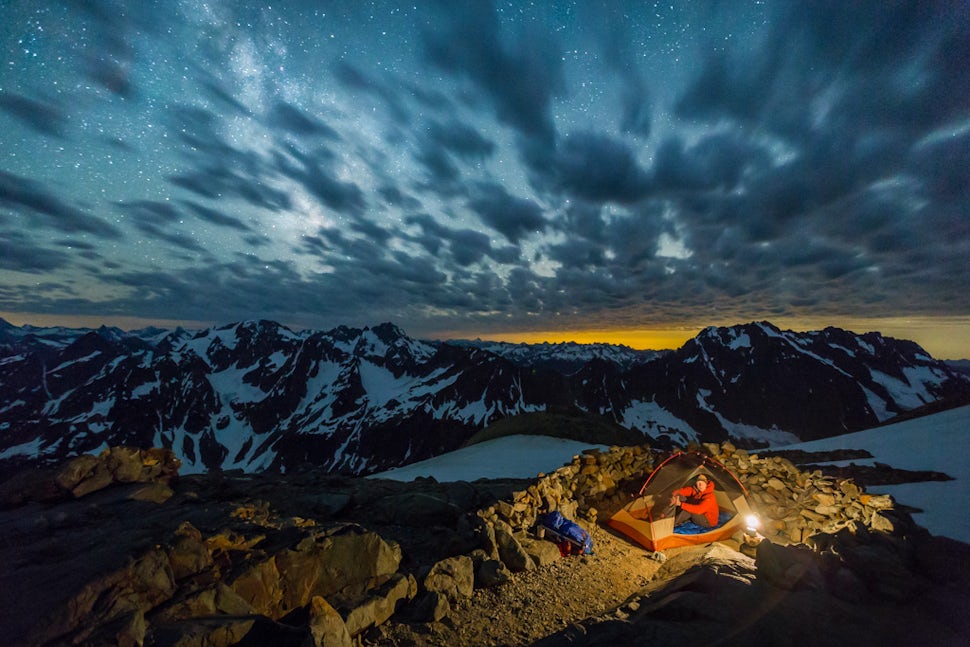#ProtectTheWild: 5 Tips For Waste Disposal In The Backcountry
Don't trash the great outdoors.
By: NOLS + Save to a List

Let’s talk waste. When you head out for an overnight trip into the backcountry, you’re going to produce trash and human waste. While it’s basically impossible to avoid this, properly disposing of said waste is not only quite simple, it’s also your responsibility to your host, the great outdoors. After all, you wouldn’t go into your neighbor’s backyard, have a barbecue, and leave all the trash behind, right?

We know that you truly enjoy the places you’re visiting and want to maintain them for future visitors, so check out these guidelines to follow for disposing of your waste properly in a backcountry setting.
1. Basic Principles
In areas with no toilet facilities, packing out human waste is the most responsible way of dealing with it. If this simply won’t work for your situation, either because of inconvenience or impracticality, proper disposal should accomplish four objectives:
- Minimize chance of water pollution.
- Minimize the chance of anything or anyone finding the waste (no one likes to dig up someone else’s #2)
- Maximize the rate of decomposition
- Eliminate contact with insects and animals that may transmit disease
2. Human Waste
- Catholes are the best option in areas that have frequent visitors. Choose a site that is out of the way and more than two hundred feet from water, trails, and camps. Dig a cathole six to eight inches deep and four to six inches in diameter. When you’ve finished “using” the cathole, stir in soil with a stick, cover with two inches of topsoil, and attempt to return the appearance back to how it was before you dug your cathole, also known as “naturalizing”. If you are traveling with a group, signaling the spot with an upright stick may be a thoughtful final touch.
Latrines are the least desirable option but may be appropriate when the number of disposal sites is severely limited, you’re camping with a large group for a stay longer than a few nights, or if your group may have some inexperienced campers who may not be comfortable properly digging catholes. Dig a latrine wider than it is deep, but at least eight inches in depth. After each use, cover feces with soil and compress them with a foot or a shovel to encourage decomposition. Fill in the latrine once it gets within four inches of the surface and naturalize the site. Check in with local land management for details on latrine guidelines for the area you’ll be camping.
The above methods are ideal for going #2. Urine has less impact on the plants and soil but can sometimes attract animals who might defoliate or dig up soil. To combat this potential impact, urinate on rocks, pine needles, or gravel and if even pour some water over to dilute it. Follow the same guidelines for choosing the location as you would a cathole (two hundred feet from water, trails, and camp).

3. Toilet Paper
- You might be surprised by the possibilities for alternatives to toilet paper; rocks, sticks, snow, and vegetation make good natural toilet paper substitutes (trust us, give it a try!). If you must use toilet paper, don’t burn it—pack it out in a plastic bag. If you must bury your toilet paper, try to find moist, organic soil to bury it in.
4. Trash
- Pack it in, pack it out. Wrappers aren’t just going to disappear in the backcountry, so make sure you are conscientious of what you’ve unwrapped and pack out all the little bits and pieces.
- Rather than bringing your food with all the packaging it comes in from the store, try to unpack then repack in as few containers as possible and avoid bringing any small, individually wrapped food items.
- Plan food rations carefully to avoid leftovers and never leave any uneaten food in the backcountry.
- Feminine hygiene products must be wrapped in plastic and packed out; they will not decompose readily and wildlife may dig them up if left buried.
5. Wastewater
- Strain dishwater and scatter liquid at least two hundred feet from any water source.
- There are a number of ways to strain your water: pantyhose, bandanas, and socks are all great options and you should have one to spare.
- Use soap far from streams and lakes to avoid contaminating water.

Cover photo: Scott Kranz
This article was originally written by Molly Herber for the NOLS blog.
Please respect the places you find on The Outbound.
Always practice Leave No Trace ethics on your adventures. Be aware of local regulations and don't damage these amazing places for the sake of a photograph. Learn More
We want to acknowledge and thank the past, present, and future generations of all Native Nations and Indigenous Peoples whose ancestral lands we travel, explore, and play on. Always practice Leave No Trace ethics on your adventures and follow local regulations. Please explore responsibly!
Do you love the outdoors?
Yep, us too. That's why we send you the best local adventures, stories, and expert advice, right to your inbox.









